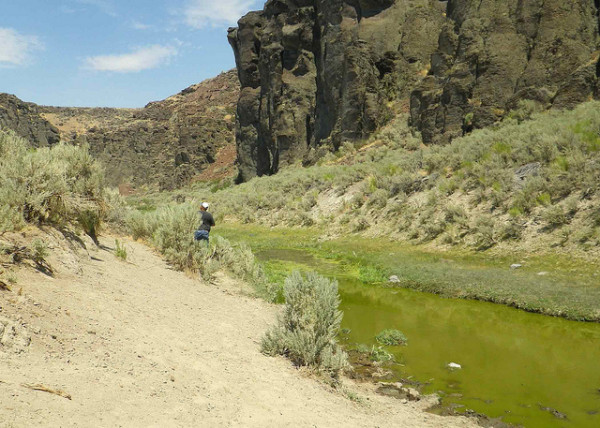In part I of this article series, I discussed how decreased water flow to bodies of water can lead to stagnation. Stagnant waters are not only a source for infectious disease, but also a source of pollution. As our water supplies become more polluted, the difficulty of making that water drinkable increases. In warmer temperatures, as is associated with drought, oxygen is less soluble in water. If there are no sources of fresh water to bring oxygen in, the ecosystem of that water will change. Any change in the normal conditions of a water source is very bad for those who consume it. Municipal water treatment facilities (the facilities that make our water drinkable) are designed based on previous data on the conditions within that source. Also, carbon dioxide, a natural product of combustion reactions, is extremely soluble in water.
With drought, we can always count on wildfires. Fire is a classic combustion reaction in which monstrous amounts of carbon dioxide are spewed out into the environment. In 1996, in Boulder Creek, Colorado, a drought led to massive wildfires. Water runoff from attempts to combat the wildfires and the following heavy rainfall contained high concentrations of ash, charcoal, debris, and carbon dioxide. As this murky water fed into the oxygen-depleted ecosystem of the reservoirs, it not only blocked the filters for multiple water sources, but also drastically changed the chemistry of the water. It killed a lot of the aquatic life within and tainted the drinking supply. Municipal water sources had to be shut off in order for the county to clean out the blockages in the machinery and reevaluate its treatment of the water.
Feature Image Source: David McNew / Stringer
Stepping away from the concern of stagnant reservoirs; many California homes are fed from well water, and there is an increasing concern that the lack of fresh rainfall will not replenish these sources. Drying wells will pull other waters into them like a sponge, and along coastal communities, there is a fear that saltwater may find its way into our drinking water. Saltwater is not only bad for humans to drink, but it can also erode pipes; further contaminating our water. Some Californians believe that hydraulic fracturing or fracking (using high-pressure water and sand underground to release natural gases) will lead to benzene and methane contamination in well water sources, but there is currently no reliable research to support these claims. There are some fairly compelling YouTube videos in which residents near fracking sites in Pennsylvania are able to light their tap water on fire, supposedly from methane contamination.
All in all, it is crucial to our health that we begin taking measures to conserve water as the drought continues to plague us.
Feature Image Source: BLM Nevada










